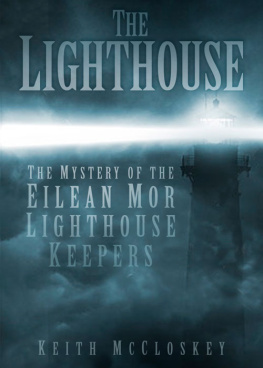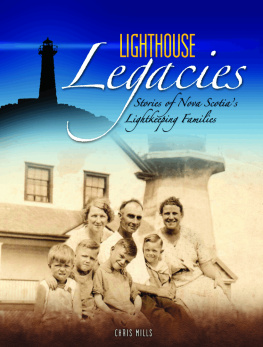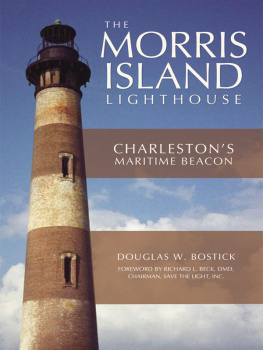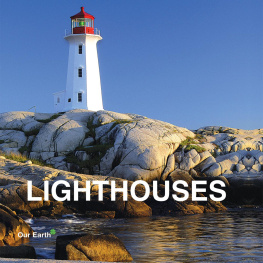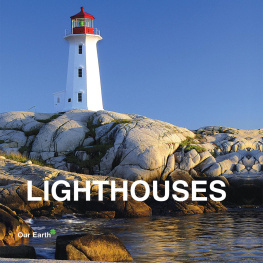

In Memory of Calum Eric Macaulay Sutherland 19522009. A Lewisman at Heart.
C ONTENTS
I was intrigued by the story of the missing lighthousemen on Eilean Mor for many years, particularly as good friends of mine lived in Carloway. It is a tragedy which has been debated constantly by those interested in mysteries of the sea. There is plenty of information within books, magazines, newspaper archives and the internet about the story but once I delved into them, numerous inaccuracies cropped up. For instance, one of the biggest misconceptions of this story is the state of the sea and the weather at the Flannan Isles on the 15 December 1900. It is generally believed that the sea was relatively calm and the weather was not unduly bad. The records show that this is not the case, however.
What I want to do in this book is to present all the facts to the reader and let them make their own minds up after looking at the evidence. The giant wave theory is almost too obvious, but using the principle of Occams Razor it is possibly the correct answer as to what happened. Having spent a considerable amount of time looking into this mystery I have to say I am not entirely convinced by the most obvious answer for reasons I give in the text, but as I said, it is up to the reader to draw their own conclusions.
I would also like to say that produced in this book is the first published photograph of what is believed to be the three missing men together, which was kindly provided to me by Steven Gibbons, a relative of Thomas Marshall.
The following description was given to me by a former Northern Lighthouse Board (NLB) lighthouse keeper: We were ordinary folk, doing a job that was far from ordinary. With this in mind, I have tried to introduce brief aspects of the life of a lighthouse keeper for the reader to understand a little about their lives. The terms lighthouse keeper, lightkeeper and keeper are all interchangeable.
Keith McCloskey
Berkshire
January 2014
I would like to acknowledge the kind assistance of the following: Lorna Hunter and the NLB; Colin Sutherland, Lord Carloway; Norrie Simpson for additional research; Arthur Flynn; Sheila Ryan for permission to use her research material; Anne Cowne of Lloyds Register Group Services Ltd; Mark Beswick of the Meteorological Office National Meteorological Archive, Exeter; Professor Elizabeth Austin of Edinburgh University; Judy Greenway and the Trustees of the Wilfrid Wilson Gibson Estate; Ian Cowe for the use of his photo of the shore station at Breasclete; Chris Downer for the use of his excellent photos; Christopher Nicholson; Sigurd Towrie for permission to use his Stronsay Beast article on the Orkneyjar website as source material; Jay C. Buckey Jr MD; Robert Stewart, retired Professor of Oceanography at Texas A&M University; Yvonne Shand at the National Library of Scotland; Merrilyn MacAulay and Donnie G. Macleod, Catherine Mackie Quirk and Ian Begg for information relating to her great grandfather PLK William Beggs; Iain Macaulay for his very helpful information and advice; Iain Angus for his description of the Muir Cul ; the very helpful staff of Seatrek who run trips out to the Flannans and St Kilda; Triona McCloskey, Camilla McCloskey and Marcella OSullivan for proofreading; also Liz Turner and Morag Mcfadden for use of their photos.
A special mention for former NLB keepers Alistair Henderson, Ron Ireland (also thanks for use of Rons Flannans photographs) and Norrie Muir. Both Ron Ireland and Norrie Muir have served on the Flannan Isles Lighthouse.
A very special mention also to Steven Gibbons for allowing me to use the photos of Thomas Marshall and to Hugo Mander for drawing my attention to them.
I am especially grateful to Alistair Henderson for his considerable input and advice.
Approaching midnight on the night of 1516 December 1900, approximately 80 miles out north-west from the Scottish mainland in the North Atlantic, a 2,193-ton cargo vessel made her way through the dark, cold waters. The vessel was the SS Archtor , registered in London with a crew of twenty-four and jointly owned by Francis Arthur Holman and others, carrying general cargo from Philadelphia in the USA to Leith. The Archtor had originally been launched five years earlier as the SS Whetstone and had been renamed Archtor only a year previously. It was a regular, even mundane, run between the two ports for the vessel, although the weather had been stormy for most of the voyage. The severity of the storm had swept away one of the four compasses that she carried from her poop deck. Despite the weather having settled down somewhat, there was still a very heavy swell
As the evening came on and the Archtor approached the Flannan Islands, the master of the vessel, Captain Holman, felt that something was not right. Despite searching constantly on the horizon as they came closer to the islands, there was only darkness, and even though there was a very heavy sea with a strong south-south-westerly wind, it was a clear night.
By midnight, the Archtor had reached a point that was estimated to be well within 5 miles to the north of the Flannan Islands and the relatively new lighthouse. Even with the changeover of watches at midnight there was still no sighting of the light. Once again, Captain Holman stood on the bridge and scanned the horizon to the south to search for the light from the Flannan Islands lighthouse, which had only been in operation for a year. The lighthouse itself had officially become operational on 7 December 1899 and had been built on the largest of the Flannan Islands, named Eilean Mor. Depending on the weather and visibility, the light had a range of up to 24 miles.
As the vessel got closer and came well within range of the light, there was still only darkness and the Archtor passed through the area without any sighting of it. The Archtor continued steering on a south-east by east course until 4 a.m. on the morning of 16 December,
As Captain Holman searched in vain for the light, he would not have known at that point, 20 miles to the south-east of the Flannan Islands, that there was another potential observer who could have shared his concerns about the non-appearance of the light over a number of days. The Northern Lighthouse Board (NLB) paid a gamekeeper, Roderick MacKenzie, on Lewis, the sum of 8 a year to act as an observer to the light. Lewis is the largest of the Outer Hebrides islands and the nearest point to the Flannan Islands. Roderick Mackenzie made his observations of the light from Gallan Head on Lewis where principally he was to keep an eye out for any signals from the Eilean Mor Lighthouse. He was specifically tasked to watch for signals from the lighthouse as opposed to any non-operation of the light itself. Any problems connected with the operation of the light would then be communicated to him through signals which he could then act on. If he observed any signals indicating a problem of any nature, he was required to send a telegram to the Head Office of the Northern Lighthouse Board (NLB) in Edinburgh immediately informing them. The NLB could then arrange for any repairs to be made as soon as possible. Roderick Mackenzie had last noted the light was operating on 7 December 1900 and had not seen it since that date. One week and one day later, on 15 December 1900, he had still not seen the light, but he put this down to the appalling weather and atmospheric conditions at the time. He had on previous occasions not observed the light for days at a time due to bad weather and thought nothing more of it, provided he saw no signals during the day and provided he saw the light eventually after a short period of a few days. After 15 December had come and gone and the days got closer to Christmas, Mackenzie asked both of his sons to assist him in keeping a watch towards the Flannans, as he was by now starting to get worried at the length of time it had been since he had seen the light.
Next page
